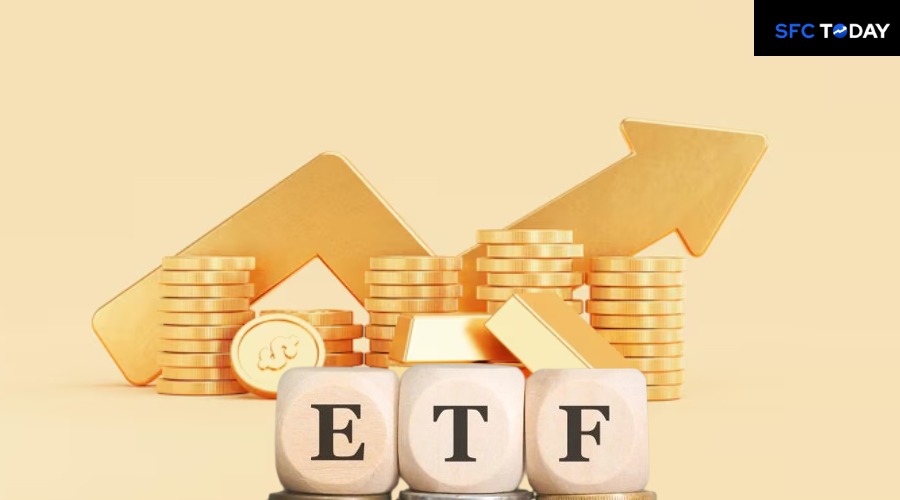Top 10 Indian ETFs to Buy in 2025 for Safe Growth
Introduction
Exchange-traded funds (ETFs) have picked up tremendous traction among Indian investors. With changing markets and risk management being the hour of need, ETFs provide a cost-effective but diversified means to invest in equities, commodities, and themes. In 2025, the Indian ETF market presents a few high-quality choices for strategic diversification.
What Are ETFs?
ETFs are a category of exchange-traded funds listed on an exchange, similar to stocks. These funds replicate a specific index, sector, or commodity and provide both diversification and liquidity. ETFs are unlike mutual funds since they are traded in real time during market hours and have no entry or exit loads.
Why ETFs Are Growing In Popularity In India
Increased awareness, reduced cost ratios, and improved digital access have resulted in the popularity of ETFs. Institutional investors, retail investors, and financial planners now actively incorporate ETFs into portfolios for return and risk management. Government steps like the inclusion of ETFs in the National Pension System (NPS) have also increased demand.
Important Points to Keep in Mind Before Investing in ETFs
The most important things to compare are accuracy in tracking performance, liquidity, tracking error, underlying index, and total cost of ownership. Larger Assets Under Management (AUM) generally imply more successful market participation and smaller tracking errors. Tracking of ETFs’ deviation from the benchmark is required periodically to keep the portfolio efficient.
Top Indian ETFs of 2025
Nippon India Nifty 50 ETF
It provides access to India’s Nifty 50 Benchmark Index. It’s one of India’s most liquid ETFs and boasts low expense ratios. It’s well-suited to passive large-cap exposure and is an excellent core portfolio holding.
ICICI Prudential Nifty Next 50 ETF
For investors searching beyond the top 50, this ETF attempts to capture the potential for growth of emerging large caps. The Nifty Next 50 Index companies are those that are likely to join the Nifty 50, usually generating higher returns in bull cycles.
SBI Nifty Bank ETF
Banking is also among the biggest drivers of economic growth in India. This fund gives targeted exposure to the Nifty Bank Index, consisting of the nation’s largest and most actively traded banking stocks. It is an excellent option for thematic exposure to banks.
HDFC Gold ETF
The precious metals continue to be the hedge of preference in troubled times. This ETF is designed to replicate the domestic gold price and is backed by physical gold. An excellent addition to offer portfolio diversification and protection against inflation.
Motilal Oswal Nasdaq 100 ETF
This ETF is suitable for international diversification and provides exposure to the US-listed Nasdaq 100 Index. This portfolio composition includes global technology leaders. It offsets local investing with global growth directions.
UTI Nifty 200 Momentum 30 ETF
Momentum investing is gaining popularity, and this ETF picks high price momentum stocks from the universe of the Nifty 200. Ideal for aggressive, high-beta exposure with definite trend-following justification.
Kotak Nifty Alpha 50 ETF
From the top-performing one-year stocks, this ETF provides an intelligent beta strategy. It focuses on the top performers with a systematic and rule-based investment methodology.
Axis Healthcare ETF
Health care is an emerging defensive sector with high growth. This ETF comprises top Indian health care and pharma stocks. This ETF is appropriate for those portfolios seeking sectoral strength with transparency in growth.
Benefits of Including ETFs in a Portfolio
ETFs introduce transparency and flexibility to investments. Low management cost, real-time trading, and exposure to a portfolio of equities are some of the primary benefits. Their passively managed nature contributes to lowering fund manager bias and improving predictability in tracking the benchmark.
Risks and Limitations of ETFs
Even with diversification accompanying ETFs, they do entail market risks. Sector concentration, illiquidity in less liquid ETFs, and tracking errors are problems that come up every day. Sectoral ETFs can fall behind when that sector has continuous downturns. Pre-allocation diligence is required.
Strategic Approaches for ETF Investing
By. Combining ETFs with mutual funds and direct equities, it is a diversified approach. Core can be constructed using. Large-cap or index ETFs, and alpha can be added by thematic or sector ETFs. Global ETFs provide. Geographical diversification. Periodic rebalancing ensures that the portfolio remains in its optimal form.
Conclusion
The top Indian ETFs of 2025 are a balance of good performance, high liquidity, and low cost. They include choices such as Nippon India Nifty 50 ETF, SBI Nifty Bank ETF, and UTI Momentum 30 ETF. These have compelling applications for varied risk profiles. ETFs are an organized, transparent, and easy instrument for next-gen Indian investors to grow wealth effectively.


